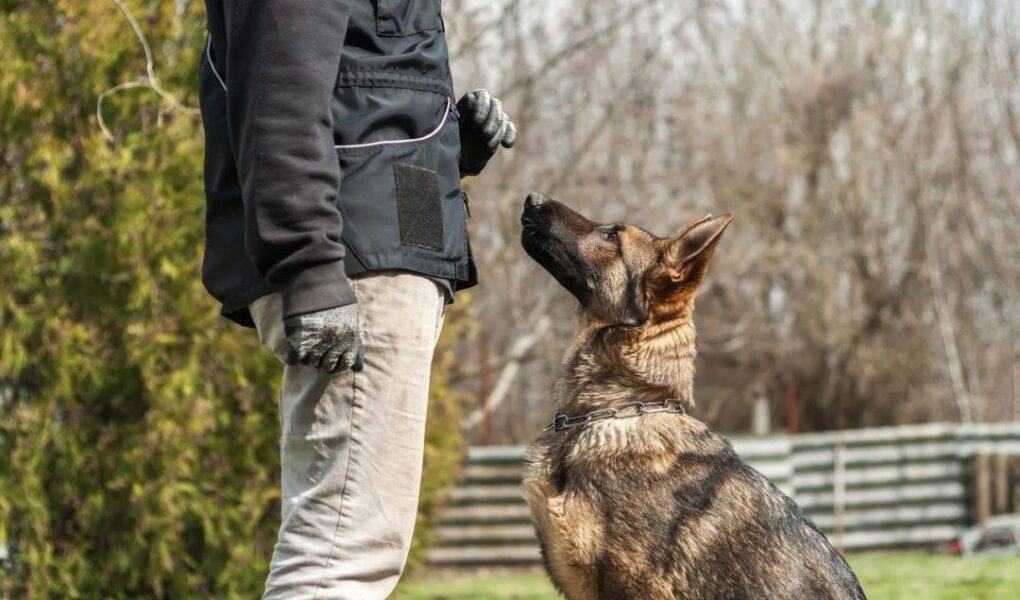When it comes to our four-legged companions, training is about so much more than just teaching them to sit or stay. It’s an opportunity to deepen the bond we share, ensure their safety, and enrich their daily lives. Whether you’re welcoming a playful puppy into your home or working with an adult dog who’s set in their ways, the journey of training opens up a world of possibilities for engagement, communication, and fun. In this article, we’ll explore a variety of skills and activities that can elevate your dog’s training experience, from basic obedience commands to stimulating tricks and enriching games. Get ready to unleash your creativity and watch your furry friend thrive as they discover new challenges and joys!
Table of Contents
- Essential Obedience Commands for a Well-Behaved Companion
- Engaging Tricks to Stimulate Your Dogs Mind and Bond with You
- Socialization Techniques to Foster Friendly Behavior in Diverse Environments
- Health and Fitness Training Activities to Keep Your Dog Active and Happy
- Q&A
- The Way Forward
Essential Obedience Commands for a Well-Behaved Companion
To cultivate a harmonious relationship with your furry friend, mastering a few key commands is essential. These fundamental cues not only enhance communication but also foster a sense of security and confidence in your dog. Here are some indispensable commands every dog should learn:
- Sit: A staple command that helps manage your dog’s behavior, particularly in social situations.
- Stay: Vital for keeping your dog put when you need them to be still and safe.
- Come: This command ensures your dog returns to you, offering a crucial way to call them away from danger.
- Leave it: Helps prevent your dog from picking up potentially harmful objects from the ground.
- Down: Encourages your dog to settle down, providing a calming effect in stimulating environments.
Training your dog to respond reliably to these commands can significantly enhance daily interactions. For those looking to track progress or understand the benefits of each command, consider the following table:
| Command | Benefits |
|---|---|
| Sit | Improves impulse control |
| Stay | Enhances safety in public spaces |
| Come | Crucial for emergency recall |
| Leave it | Prevents ingestion of harmful items |
| Down | Promotes calmness and focus |
Engaging Tricks to Stimulate Your Dogs Mind and Bond with You
Keeping your dog mentally stimulated can be as enjoyable as it is rewarding. Use target training to teach your furry friend to touch a specific object with their nose. This simple exercise not only sharpens their focus but also strengthens your connection through positive reinforcement. Incorporating scent games can also be a fantastic way to engage their natural instincts. Hide treats around the house or yard and encourage your dog to sniff them out; this will keep their mind active and give you both a sense of achievement.
Interactive toys are another excellent avenue to explore. Consider using puzzle feeders where your dog has to solve a challenge to access their food. You can also incorporate simple trick training sessions, teaching them to roll over or play dead. These activities are perfect for enhancing coordination and communication between you and your dog. Don’t forget to utilize positive reinforcement techniques; a little praise or a tasty treat goes a long way in making training sessions enjoyable for both of you.
Socialization Techniques to Foster Friendly Behavior in Diverse Environments
Establishing friendly behavior in your dog demands a careful blend of techniques, especially when navigating diverse social situations. It’s imperative to focus on positive reinforcement strategies, which not only encourage good behavior but also cultivate a sense of trust and understanding. Consider the following socialization techniques:
- Gradual Exposure: Introduce your dog to various environments slowly to prevent overwhelming them.
- Structured Playdates: Organize play sessions with well-behaved dogs to teach social cues and boundaries.
- Positive Reinforcement: Reward friendly interactions with treats or praise to reinforce desired behaviors.
- Supervised Outings: Take your dog to different places, ensuring you guide their behavior while offering rewards for calm responses.
Utilizing consistent routines not only fosters your dog’s comfort but also shapes their responses in varied settings. Engaging in training exercises that focus on friendly behaviors can amplify positive outcomes. Here’s a table showcasing some effective training commands paired with socialization goals:
| Command | Socialization Goal |
|---|---|
| Sit | Encourages patience and calmness around others. |
| Stay | Promotes control in dynamic environments. |
| Come | Strengthens recall in social settings. |
| Leave it | Teaches focus and disengagement from distractions. |
Health and Fitness Training Activities to Keep Your Dog Active and Happy
Keeping your dog active and happy is a rewarding journey that strengthens your bond while promoting their overall well-being. Engage your furry friend with a variety of activities that stimulate their mind and body. Consider incorporating these exercises into your routine:
- Obstacle Course: Create a challenging but fun course in your backyard using items like cones, tunnels, and jumps.
- Fetch Variations: Introduce different toys for fetching, or make it a game by hiding the toy and encouraging your dog to find it.
- Agility Training: Teach your dog agility skills by setting up jumps, weave poles, and pauses at various station points.
- Mind Games: Use puzzle toys or hidden treats to keep their intellect engaged.
- Group Playdates: Arrange playdates with other dogs to teach social skills and increase their physical activity.
Moreover, it’s essential to rotate activities to keep things fresh and exciting. Here’s a simple table to help understand the benefits of each activity:
| Activity | Benefits |
|---|---|
| Obstacle Course | Improves agility and coordination |
| Fetch Variations | Enhances retrieval skills and energy release |
| Agility Training | Boosts confidence and physical fitness |
| Mind Games | Stimulates cognitive function |
| Group Playdates | Promotes social interaction |
Q&A
Q&A: Things to Train Your Dog
Q: What are some essential commands every dog should know?
A: Every dog should master basic commands like “Sit,” “Stay,” “Come,” ”Down,” and ”Leave It.” These foundational commands promote safety and enhance communication between you and your canine companion.
Q: How can I train my dog to walk properly on a leash?
A: To train your dog to walk nicely on a leash, start in a quiet area with minimal distractions. Use a short leash and let your dog sniff around. Every time they pull, stop walking, and only resume when the leash is slack. Reward them with treats and praise for walking beside you.
Q: Is socialization important for my dog?
A: Absolutely! Socialization is crucial for a well-adjusted dog. It helps them feel comfortable around people, other animals, and different environments. Gradually expose your dog to various stimuli – parks, busy streets, and friendly dogs – in a positive way to build their confidence and reduce anxiety.
Q: How can I teach my dog to come when called?
A: Teaching recall can be fun! Start with a long leash in a controlled environment. Call your dog’s name followed by a command like ”Come!” and gently tug on the leash if needed. Reward them with treats and affection when they come to you. Practice regularly and make it a game for your dog.
Q: What are some tips for teaching my dog tricks?
A: Teaching tricks is a delightful way to bond with your dog! Start with simple tricks, like “Shake Hands” or “Roll Over.” Use positive reinforcement techniques—reward them with treats, praise, or play. Break the trick into small steps, and practice consistently to keep your dog engaged and excited.
Q: How can I address unwanted behaviors in my dog?
A: To tackle unwanted behaviors, identify the trigger and redirect the behavior. For instance, if your dog barks excessively when the doorbell rings, teach them to go to their mat instead. Consistent positive reinforcement will encourage good behavior while minimizing stress.
Q: When is the best time to start training my dog?
A: It’s never too late to train your dog, but the earlier, the better! Puppies as young as 7-8 weeks can begin learning basic commands and socialization skills. However, older dogs can also learn new tricks and behaviors with patience, consistency, and love.
Q: How long should training sessions be?
A: Short and sweet is the motto! Keep training sessions around 5-15 minutes, depending on your dog’s age and attention span. Frequent, positive interactions are more effective than longer, exhausting sessions.
Q: Can I train my dog without treats?
A: Yes, while treats are a popular motivator, you can use praise, toys, or playtime as rewards. Find what excites your dog the most and use it to reinforce desired behaviors. The goal is to create a fun and rewarding training atmosphere!
Q: How do I ensure training is enjoyable for my dog?
A: Keep training light-hearted! Use upbeat commands, incorporate play, and be patient. If your dog seems frustrated or bored, take a break. Make the training experience positive, and they’ll look forward to learning something new!
The Way Forward
As we wrap up our exploration of essential training techniques for your canine companion, it’s clear that the journey of helping your dog develop new skills and behaviors is both rewarding and enriching. Each command mastered and every trick learned not only strengthens the bond between you and your furry friend but also lays the groundwork for a well-mannered and happy pet. Remember, patience and consistency are key, and celebrating small victories will make the journey enjoyable for both of you. So gather your treats, unleash your creativity, and embark on this exciting adventure together. Happy training!



